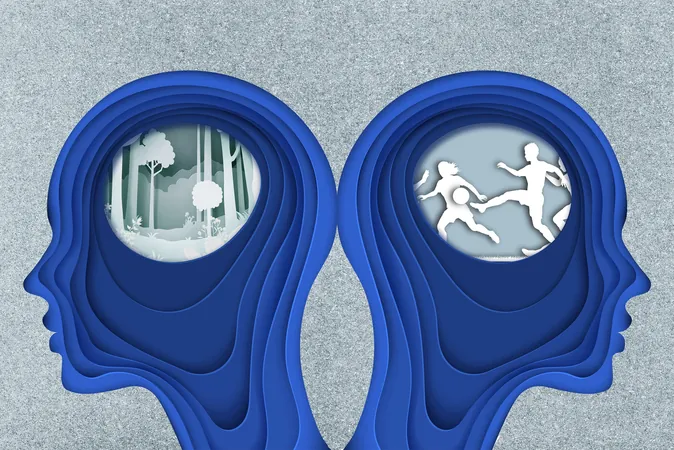
Unveiling the Secrets of Memory: How Our Brain Links Places and Events
2025-01-15
Author: Siti
Exploring the Intricacies of Memory Formation
In a groundbreaking revelation, MIT researchers have developed a new model that sheds light on how specific cells in the brain's hippocampus, known as place cells, are instrumental in encoding not just spatial memories, but also episodic ones—our memories of personal experiences and events. This pivotal research enhances our understanding of the brain's complex memory circuits and could have significant implications for the future of memory-related disorders, artificial intelligence, and even memory enhancement techniques.
The Magic of Place Cells and Grid Cells
Place cells, located in the hippocampus, have been recognized for nearly 50 years as critical components of our spatial memory system. They are enriched by grid cells found in the entorhinal cortex, which fire in a unique geometric pattern, serving as an intricately woven lattice that represents physical spaces. Together, these cells create a framework that not only assists in recalling familiar locations but also plays a pivotal role in forming and recalling episodic memories.
MIT's Ila Fiete, a prominent figure in brain and cognitive sciences, remarked, "This model is a first-draft model of the entorhinal-hippocampal episodic memory circuit. It establishes a foundation for us to further explore the mysteries of episodic memory."
Revolutionizing Our Understanding of Memory
This new model proposes that the unusual tiling structure of grid cells and their interactions with hippocampal cells create a dual-purpose system for storing both types of memories. The researchers postulate that each activation pattern defined by grid cells operates like a "well," acting as a pointer to specific memories held in the synapses between the hippocampus and sensory cortex. This suggests that our brains function like an index, retrieving vast stores of past experiences based on partial inputs.
Fiete explains, "Conceptually, we can think about the hippocampus as an indexing network... The scaffold doesn’t contain the content; it only contains this index of abstract scaffold states."
Moreover, the model efficiently captures sequential events, allowing our recollections to reflect the correct order of memories, an essential function for storytelling and personal narratives.
The Problem with Memory Cliffs
Historically, memory models based on Hopfield networks have faced criticism for their inability to accurately represent biological memory processes. These traditional models often encounter a "memory cliff," where adding new memories results in the loss of previous ones. In contrast, the MIT model showcases a gradual degradation of older memories while new ones continue to be formed—mimicking the actual functionality of human brains, where details of older memories fade but the capacity for new ones remains influential.
Applications Beyond Understanding
The implications of this model extend far beyond academic intrigue. Understanding how the brain links spatial and episodic memories could pave the way for innovative treatments for memory impairments caused by aging or neurological disorders. The research also hints at advanced techniques for enhancing memory recall through methods like “memory palaces,” where familiar locations are used as mental aids for storing disparate pieces of information.
As researchers continue to refine their model, they aim to delve deeper into the transformation of episodic memories into semantic memory—factual recall devoid of contextual ties—further bridging understanding between different types of memory and their applications in both biological and artificial systems.
Conclusion
Stay tuned as science dives deeper into the rabbit hole of memory research—who knows what hidden secrets our brains may hold?


 Brasil (PT)
Brasil (PT)
 Canada (EN)
Canada (EN)
 Chile (ES)
Chile (ES)
 Česko (CS)
Česko (CS)
 대한민국 (KO)
대한민국 (KO)
 España (ES)
España (ES)
 France (FR)
France (FR)
 Hong Kong (EN)
Hong Kong (EN)
 Italia (IT)
Italia (IT)
 日本 (JA)
日本 (JA)
 Magyarország (HU)
Magyarország (HU)
 Norge (NO)
Norge (NO)
 Polska (PL)
Polska (PL)
 Schweiz (DE)
Schweiz (DE)
 Singapore (EN)
Singapore (EN)
 Sverige (SV)
Sverige (SV)
 Suomi (FI)
Suomi (FI)
 Türkiye (TR)
Türkiye (TR)
 الإمارات العربية المتحدة (AR)
الإمارات العربية المتحدة (AR)